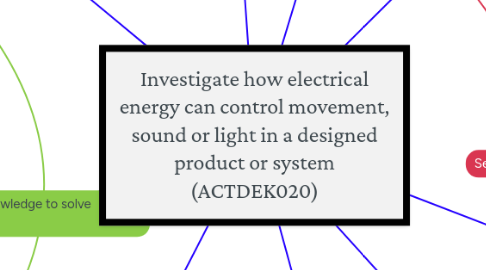
1. Technology Thinking
1.1. Design Thinking
1.2. System Thinking
1.3. Computational Thinking
1.3.1. Micro:bit coding
2. Theme: “Warning Systems”
2.1. Light
2.1.1. Lighthouses
2.1.2. Railway Crossings
2.2. Sound
2.2.1. Tsunami Sirens
2.2.2. School Sirens
2.3. Movement
2.3.1. Vibration
2.3.2. Boom Gates
3. Learning Areas
3.1. Mathematics
3.1.1. (ACMSP147) Interpret and compare a range of data displays, including side-by-side column graphs for two categorical variables
3.2. Science
3.2.1. (ACSSU097) Electrical energy can be transferred and transformed in electrical circuits and can be generated from a range of sources.
3.2.2. (ACSHE100) Scientific knowledge is used to solve problems and inform personal and community decisions.
3.3. Arts: Media Arts
3.3.1. (ACAMAM063) Develop skills with media technologies to shape space, time, movement, and lighting within images, sounds and text.
4. General Capabilities
4.1. ICT
4.1.1. Investigating
4.1.1.1. define and plan information searches
4.1.1.2. locate, generate and access data and information
4.1.1.3. select and evaluate data and information.
4.1.2. Creating
4.1.2.1. generate solutions to challenges and learning area tasks.
4.1.3. Communicating
4.1.3.1. Collaborate, share and exchange Students create a digital portfolio to document their process.
4.1.3.1.1. SeeSaw
4.1.3.1.2. Sway
4.1.3.1.3. OneNote
4.1.3.1.4. Showbie
5. Cross Curriculum Priorities
5.1. Asia and Australia’s Engagement with Asia
5.1.1. OI.2 Interrelationships between humans and the diverse environments in Asia shape the region and have global implications.
5.2. Sustainability
5.2.1. OI.8 Designing action for sustainability requires an evaluation of past practices, the assessment of scientific and technological developments, and balanced judgements based on projected future economic, social, and environmental impacts.
6. Resources
6.1. Micro:bits
6.2. iPads
6.3. Microsoft Sway
6.4. Craft supplies
7. Safety
7.1. Choice of materials
7.2. CARA Risk Matrix
7.3. Online Safety
7.4. Resources
7.4.1. scissors
7.4.2. hot glue
7.4.3. batteries and electricity
7.4.4. Micro:bnits
